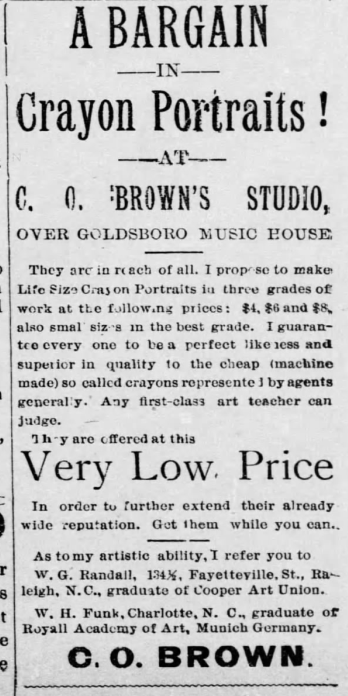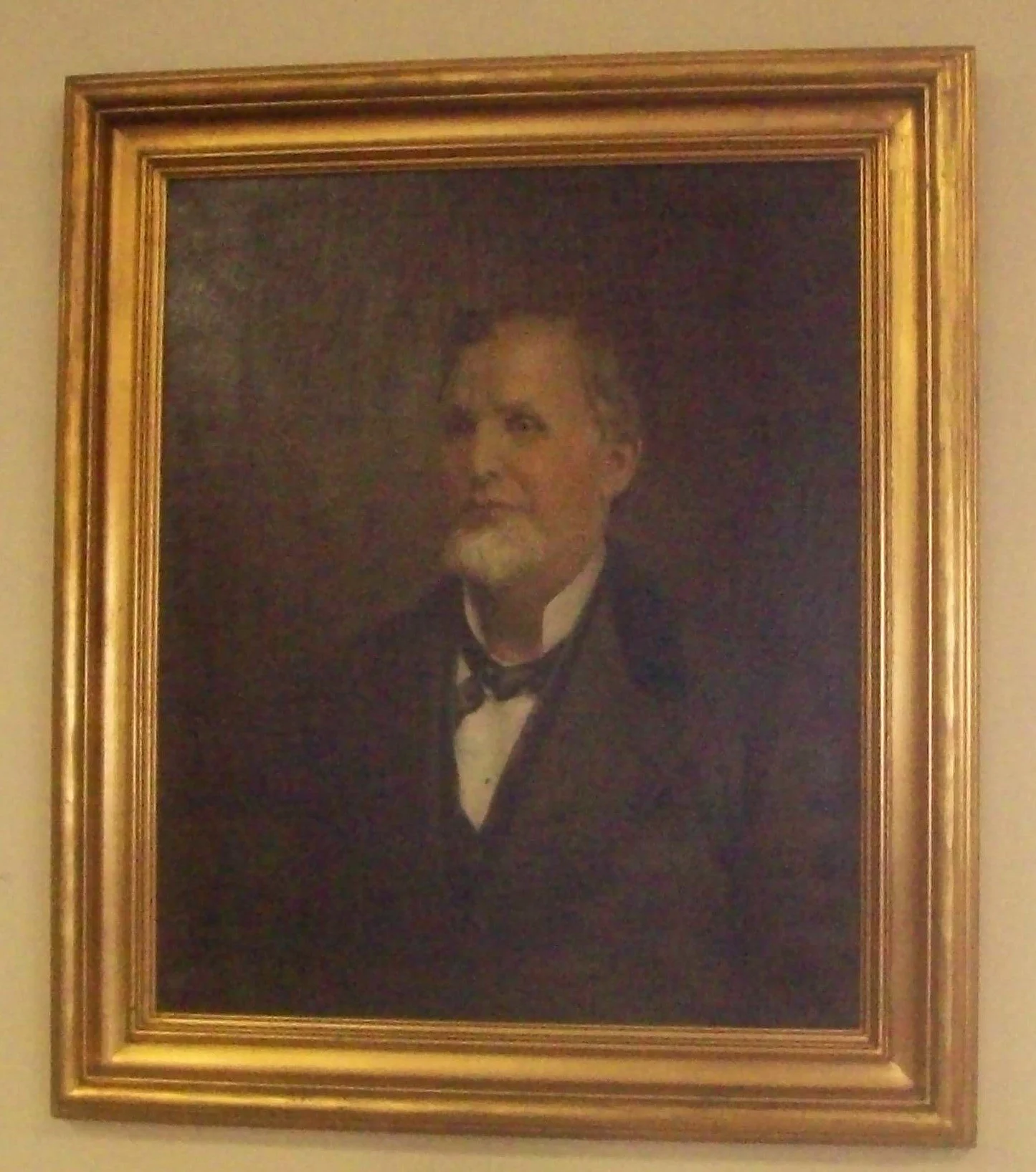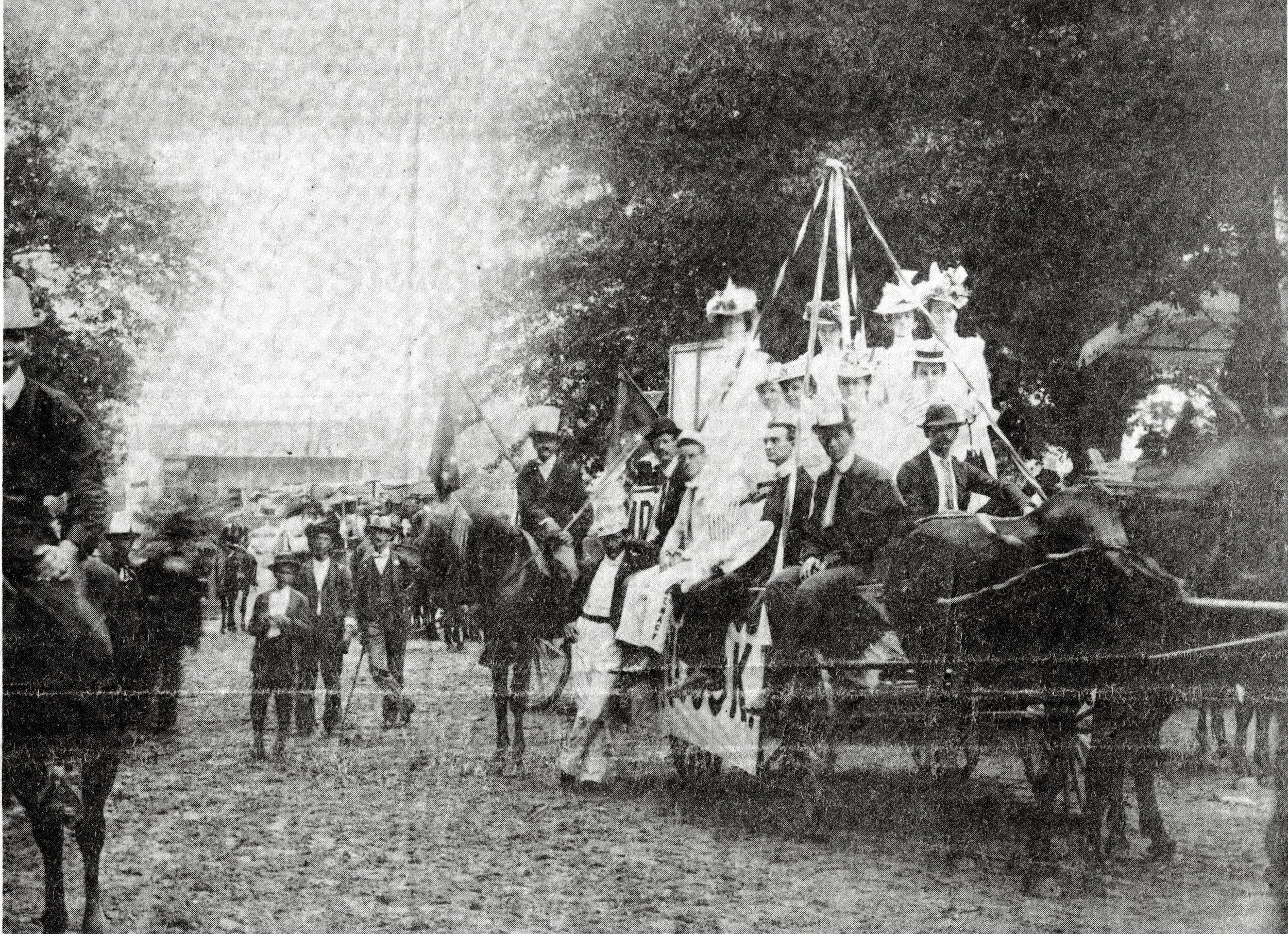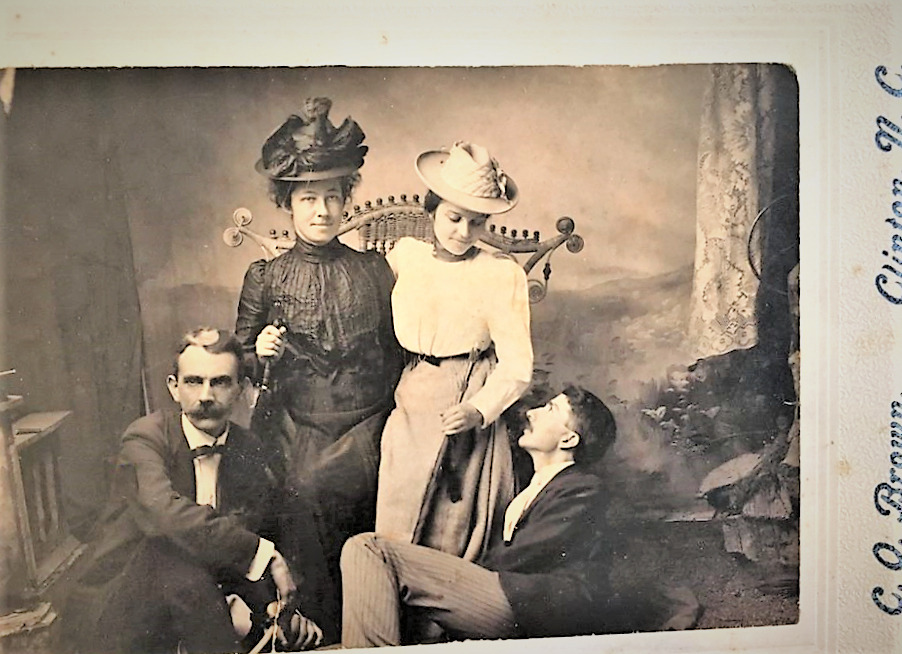Claude O. Brown, Early Area Photographer
By Claude H. Moore (1916-1994), edited by Joel W. Rose
During the late 1800s, itinerant photographers traveled across North Carolina in wagons, bringing along tents, cameras, and equipment, and faced people who rarely, if ever, had their photographs made. If your family was from Sampson County and you own some of these turn-of-the-century pictures, chances are that they were taken by a man by the name of Claude Orville Brown, the renowned photographer from Mount Olive.
C.O. Brown, as he was known, was born in 1871 at Hallsville in eastern Duplin County, the son of David B. Brown, a Confederate soldier, and his wife Sarah Elizabeth Farrior. His family later moved from Hallsville to the small community of Wolfscrape, just south of Mount Olive. Nothing is known of his early education but it is said that his parents recognized that he enjoyed reading and had natural talent for drawing.
The late Claude Moore, who taught history at Mount Olive College, said that when he first arrived at that school in the late 1960s, there were many people still alive who knew and remembered Brown well. Many homes in the area still had photographs that he made, which are as clear today as they were 80-90 years ago. Brown traveled mostly by bicycle until a few years prior to his death in 1938. At that time he purchased a small car and hired a driver. This is when he was making pictures of school children.
Brown was first and foremost an artist and his gift for art began in his youth. Paint supplies were expensive so he learned to work with crayons, honing his creative skills by sketching family and friends. Over time, he progressed from drawing simple sketches to producing fine, life-size crayon portraits. C. O. was talented and he decided to try and make a living from it. After all, farmers weren’t making any money and besides, folks were beginning to take notice of his work. He soon opened his first studio in nearby Goldsboro. A short editorial comment in the Goldsboro Weekly Argus from December 8, 1892 read:
“There is at work in this city – and has been for months – a young artist whose natural talent, steady application and successful achievement entitled him to public recognition and generous patronage. His specialty is crayon reproductions, life-size or smaller, from photographs of any size. His recent crayon picture of Governor-elect Elias Carr is as fine a specimen of crayon art as can be found anywhere. This young gentleman is Mr. C. O. Brown, whose studio is upstairs over the Goldsboro Music Center on West Center Street.”
By 1893 Brown was running newspaper ads where he offered “Life-Size Crayon Portraits” and “guaranteed every single one to be a perfect likeness and superior quality.” His portraits were offered at three grades of work at prices of $1, $6, and $8. Brown worked hard to ply his trade. In early 1894 he moved to Wilson where he opened a studio there but met with little success. He was first and foremost a gifted artist who would later become a photographer.
Trying to make a name for himself as well as a living, in 1895 Brown opened an art studio in Clinton. At the time, the town’s population was about 850 people. Renting a room at a local hotel, he ran his studio from there. His specialty was creating portraits from photographs and soon, his work got noticed. From the August 8, 1895 issue of The Sampson Democrat:
“A splendid crayon portrait of the late Judge Allmand A. McKoy of Clinton hangs in the courthouse just over the Judge’s bench. It is 22X18 and is the work of C. O. Brown, the artist, who now has a studio here. It is a gift of the bar of Clinton to Sampson County.”
This crayon portrait of Judge A.A. McKoy (1825-1885) still hangs in the courtroom at the Sampson County Courthouse.
Finding it difficult to make a living from his art alone, Brown soon began working with photography. After all, the two forms of creating pictures were similar so it was an easy transition to make. In addition, he had already built a good reputation for himself and had made many friends in the surrounding communities, all to his advantage. Like most of the traveling photographers of the day, he’d visit a town, rent a room, and set up a tent nearby from where he’d shoot his photos. Business would dictate how long he’d stay in one place, but Mount Olive was always home. Business must have been good in Clinton, since he visited this area often and made a great many family portraits there.
One dramatic photo which is attributed to Brown is that of a small parade on Main Street in front of the Court House in Clinton in the fall of 1898. The keynote speaker for the event was Charles B. Aycock, a fiery young Democratic leader from nearby Wayne County. On that day a parade and rally were held in Clinton in Aycock’s honor, who later spoke from the courthouse steps. The photo reveals several prominent local citizens riding atop a wagon through the center of town. Brown had set up his camera in front of the old Murphy Hotel, which stood on the corner of Main and Lisbon Streets.
This photo by Brown was taken in 1898 during a political rally held in Clinton. The courthouse is in the background.
Over the next several years Brown would move among the local communities, traveling from town to town in eastern NC in search of business.
These young Clinton couples pose for a whimsical photo taken by Brown.
We do not know the date exactly when Claude O. Brown set up his studio in Mount Olive, but I am inclined to believe that it was after 1900. He rode his bicycle to and from his parent’s home, five miles from the town and in 1910, he moved to Mount Olive. His shop was located upstairs at the southeast corner of James and Center streets and his sign read, "C. O. Brown, Art and Photographs." Since he was single he lived at several different places, but when he died in 1938, he had rooms at the home of Mrs. Minnie Kornegay.
C. O. Brown also traveled by train to sell his service. He was a pioneer in coloring photographs and doing charcoal portraits. During the 1970 centennial of the founding of Mount Olive, numerous photographs done by him were on exhibit.
Mr. Brown received a number of awards for his outstanding photographs, and he published his poems in several magazines. The late Albert Clement of Clement’s Studio in Goldsboro said years ago that Brown was a genius in photography.
C. O. Brown was brought up in Bear Marsh Church and while in Mount Olive, he attended the First Baptist Church. When he died in 1938 the Rev. J. P. Gully, pastor of the church, conducted his funeral service. He was buried in the old Brown Cemetery in Wolfscrape Township.




